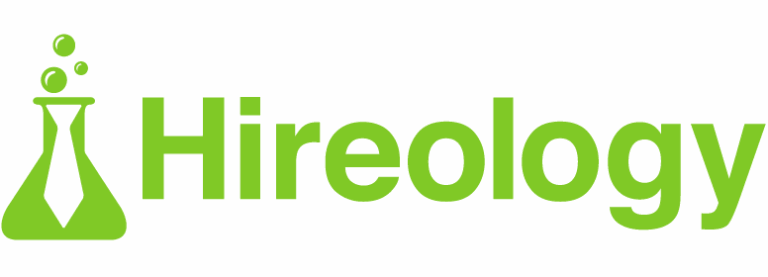Customer
Stories
Some of the world’s most forward-thinking companies are using 6sense to drive efficiency within their organizations.
Featured stories





Explore All Customer Stories
- All Personas
- Marketing
- Operations
- Sales
- All Products
- 6sense Revenue Marketing
- 6sense Sales Intelligence
- All Industries
- Automotive
- Business Services
- Education
- Financial Services
- Healthcare
- Manufacturing
- Real Estate
- Security
- Software and Technology
- Telecommunications
- Transportation and Logistics
- All Company Sizes
- Enterprise
- Small & Midsize

Hireology Drives Mid-Market Growth with 6sense Intelligent Workflows
Hireology, a leading hiring platform provider, had a 2025 business objective of moving from exclusively targeting mid-market companies to closing more deals with enterprise and strategic accounts. To help accomplish this, they used 6sense Intelligent Workflows. The workflow they built enables a comprehensive omnichannel marketing strategy from awareness to purchase. The workflow recognizes accounts by funnel stages and by industry; delivers targeted ads based on verticals like facility-based care, hospitality, and auto; and focuses ad spend […]
Swimlane Automates Precision Outreach to Enterprise Accounts with 6sense Intelligent Workflows
Swimlane needed a way to ensure every engagement with enterprise prospects was timely, relevant, and impactful. They also needed it be be consistent and scalable. With a small demand generation team, manual campaign coordination wasn’t a viable option. Using 6sense Intelligent Workflows, Swimlane can now automatically: With AI-powered go-to-market workflows, they now have the scale […]
PathFactory Zeroes in on In-Market Accounts to Maximize Every Marketing Touch
PathFactory has a familiar challenge: a small marketing team charged with driving big results. The content experience platform helps B2B companies deliver personalized content journeys. That’s a pretty-much universal need for B2B sellers, which is great — except that it means PathFactory’s marketing team has a huge ICP to reach with its intentionally small and […]
Blue Yonder Unlocks ROI Through Intelligent Audience Orchestration with 6sense Workflows
Blue Yonder, the world leader in end-to-end digital supply chain transformations, navigates the challenge of delivering high-impact campaigns across multiple channels by leveraging 6sense Intelligent Workflows. Its “always-on” LinkedIn advertising strategy achieved a remarkable 12x return on investment. Building on past ABM success Blue Yonder has a history of successful account-based marketing (ABM) since becoming […]
CallMiner Powers Customer Expansion with Health Score-Driven ABM
When enterprise software companies think about account-based marketing, they typically focus on new business acquisition. But CallMiner, a leader in AI-powered conversation intelligence, saw an opportunity to revolutionize how they engage with their existing customer base. By combining Gainsight health scores with 6sense’s targeting capabilities, they’ve created a sophisticated approach to customer expansion that’s transforming […]
Reachdesk Achieves 35% Win Rate with 6sense Intent Data
The sales team at Reachdesk, a global gifting platform, starts each day with a ritual that has revolutionized their pipeline: checking 6sense intent signals to identify their most promising opportunities. Over the past three years, this routine has enabled Reachdesk to create a more efficient, data-driven sales process that consistently delivers measurable results. The Challenge Before […]
PaperCut Connects the Marketing Dots with 6sense, Driving 9x ROI
For established B2B software companies, moving beyond broad marketing approaches to targeted account-based strategies can feel like an overwhelming transformation. PaperCut Software, a leader in print management technology, faced this challenge and turned to 6sense to bridge the gap. Adam Byer, PaperCut’s performance marketing lead, shares how they made the transition from “hoping we’re hitting […]
YuLife Unlocks Market Expansion and Drives Growth with 6sense
With a strong foundation in the UK market, YuLife wanted to expand within the United States, which required a strategic shift in go-to-market execution. CMO Lauren Berkemeyer has been instrumental in leading this transformation. “When we started, we had a strong sense of our target accounts but needed deeper intelligence to understand the ‘when’ — […]
How Simpro is Transforming Global Revenue Generation with 6sense AI Email Agents
In the dynamic world of field service management solutions, Simpro, a global software group operating in six countries, faced a pivotal challenge: how to evolve from a purely inbound marketing approach to a more strategic, account-based model. Under the guidance of Tim Lamb, vice president of growth marketing, strategically chose to focus on the UK […]
Bonterra’s Journey with 6sense: Transforming ABM with Predictive AI and Sales Alignment
Bonterra is one of the fastest-growing social good software companies in the world. Through innovative solutions for fundraising, corporate social responsibility, and case management, Bonterra is working towards increasing giving to 3% of U.S. GDP by 2033, unlocking $573 billion for more global good annually. Justin Lopez, account-based marketing manager (ABM) at Bonterra, shares how […]
How a Leading FinTech Company Accelerated Direct Sales in a New Market Using 6sense
In early 2023, a leading FinTech company explored the viability of selling payment processing services directly to merchants. Building on their prior success with 6sense in scaling account-based marketing (ABM) in the enterprise segment, the company used 6sense’s ABM and sales intelligence tools to reach this new group of buyers. As a result of business […]
Dialpad Elevates Digital ABM with 6sense Professional Services
When Dialpad set out to build their digital account-based marketing program in late 2023, they knew they needed more than just powerful platform capabilities — they needed expertise to maximize their investment and accelerate results. As digital ABM manager at Dialpad, Shanelle Rucker brought valuable experience implementing 6sense in her previous roles. But rather than […]
